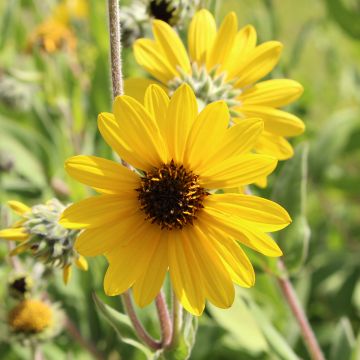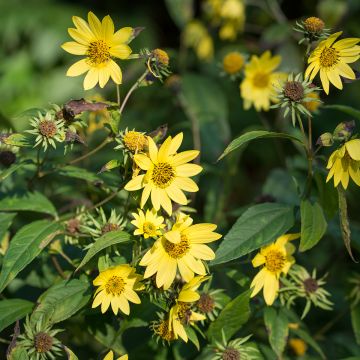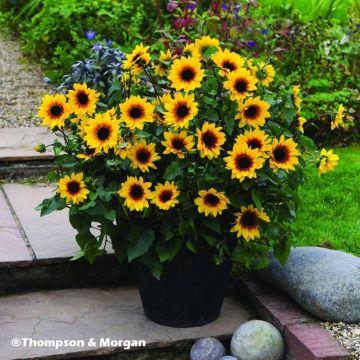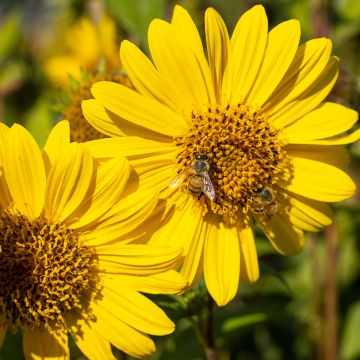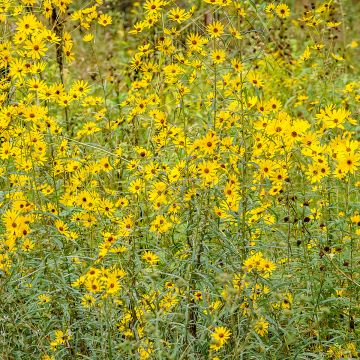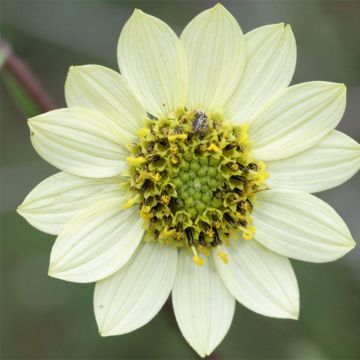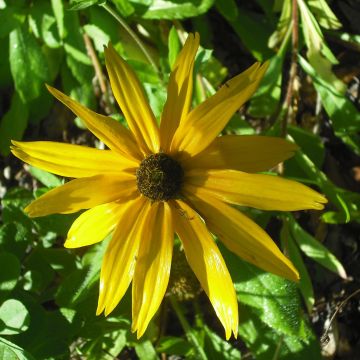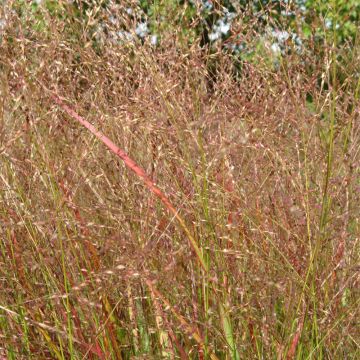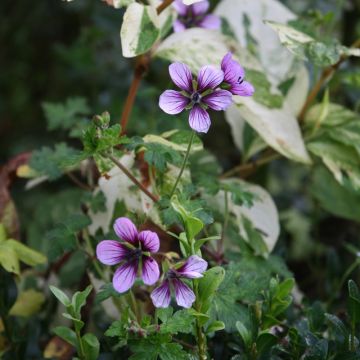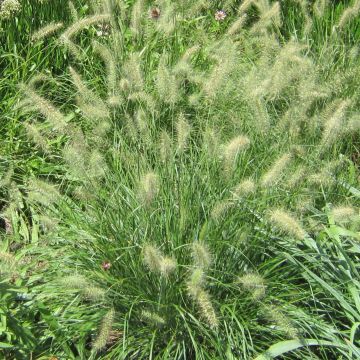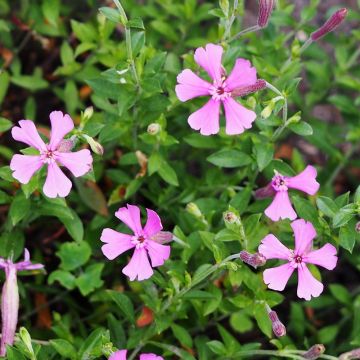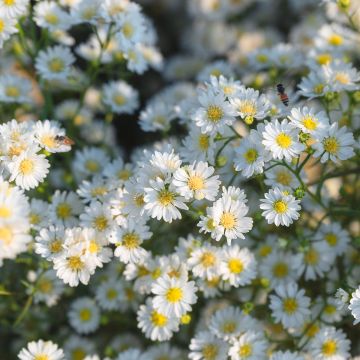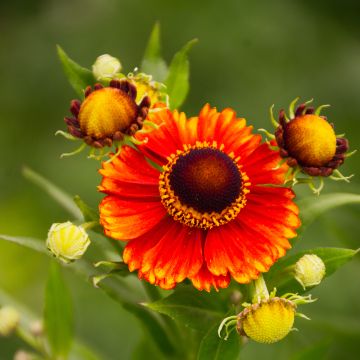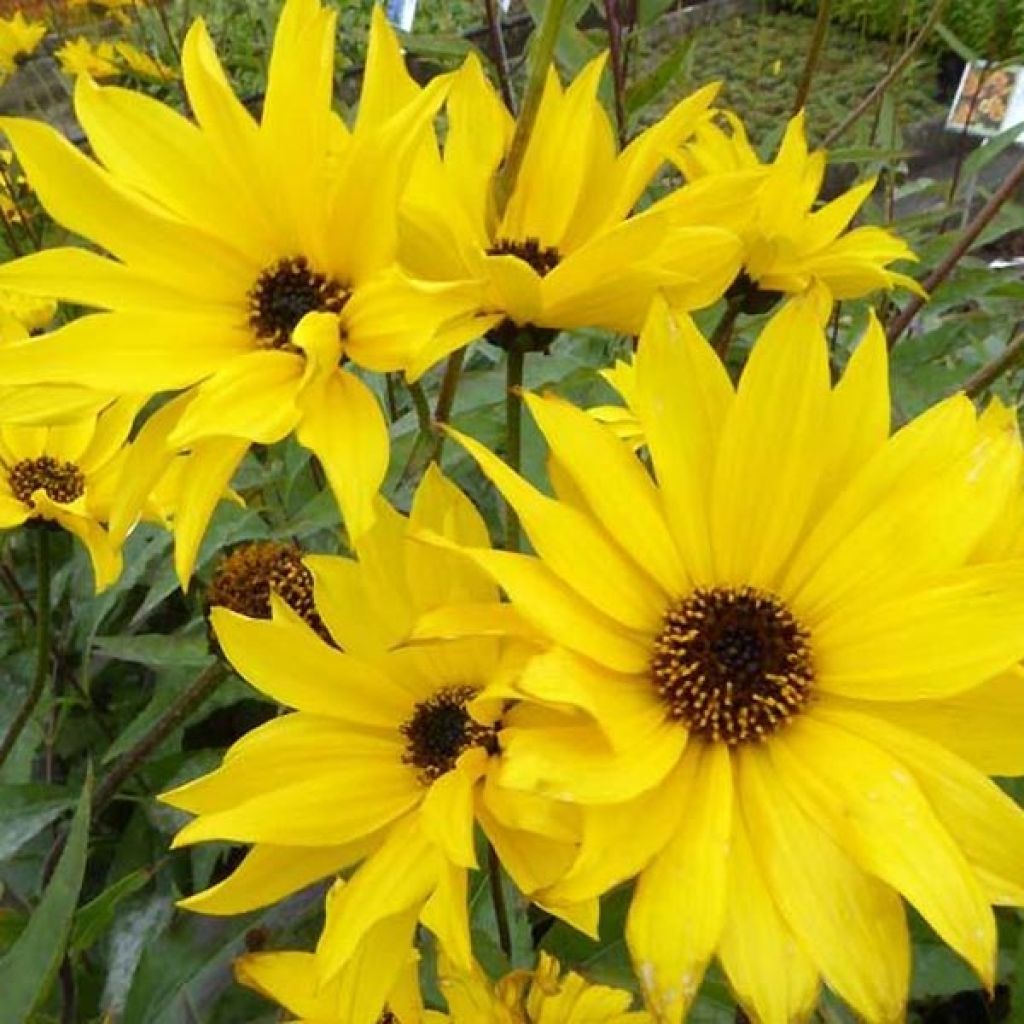

Helianthus atrorubens Monarch
Helianthus atrorubens Monarch
Helianthus atrorubens Monarch
Sunflower, Dark-Eye Sunflower
This item cannot be shipped to the selected country
Delivery charge from €5.90
Delivery to Corse prohibited
More information
Schedule delivery date,
and select date in basket
This plant carries a 12 months recovery warranty
More information
We guarantee the quality of our plants for a full growing cycle, and will replace at our expense any plant that fails to recover under normal climatic and planting conditions.
From €5.90 for pickup delivery and €6.90 for home delivery
Express home delivery from €8.90.
Delivery to Corse prohibited: UE law prohibits the import of this plant from mainland France to Corse as part of the fight against Xylella fastidiosa. Please accept our sincere apologies.
More information
Does this plant fit my garden?
Set up your Plantfit profile →
Description
Helianthus atrorubens 'Monarch' is a vigorous perennial sunflower cultivar, even in partial shade, bearing very large golden yellow daisy-like flowers with a deep purple-brown central disk. This rhizomatous perennial spreads quite rapidly into a large, densely branched and wide bush. Its basal clump consists of long, somewhat rough, medium-green leaves. In spring, it produces erect, pubescent, purple-green stems that are adorned with small, bright sunflowers in August to October, arranged in terminal clusters. Provide a location in ordinary soil in full sun or partial shade for this very easy perennial. It will work wonders planted against dark-leaved shrubs or in the background of a wildflower bed.
Helianthus atrorubens belongs to the Asteraceae family. This tall perennial is native to Central America and distinguishes itself from other perennial sunflowers by its 'Monarch' variety which reaches a height of 1.8m (6ft) with a spread of 1.2m (4ft). The overall form is a bouquet of sturdy, smooth stems at the base, bristly and rough towards the tips, and branched. The flowering occurs from September to November. The flower heads appear in large numbers at the top of the stems, resembling simple daisies with a diameter of 5 to 10cm (2 to 4in). The deciduous leaves are medium green, oval, lanceolate, hairy, measure 20 to 30cm (8 to 12in) long, and have a toothed, crenate margin. They are distributed up to the top of the stems.
The great appeal of perennial sunflowers lies in their late flowering, high hardiness, and ease of cultivation in normal soil. Helianthus atrorubens 'Monarch' is an excellent long-lasting perennial. Very vigorous, it is perfectly suited for the back of a border or even for mixed borders in partial shade. It is a plant with a rustic appearance that blends well in slightly wild areas of the garden, alongside cosmos, sainfoin, tall scabious, and pendulous Liatris, for example. Another idea for a combination, with equally easy plants: Vernonia noveboracensis, Eupatorium fistulosum, Andropogon virginicus, Muhlenbergia capillaris. Its tall stature allows it to be placed in front of shrubs (deciduous euonymus, spireas, Hydrangea quercifolia, cotinus..) that will act as natural supports while blending their autumn colours with its radiant flowering.
Report an error about the product description
Helianthus atrorubens Monarch in pictures
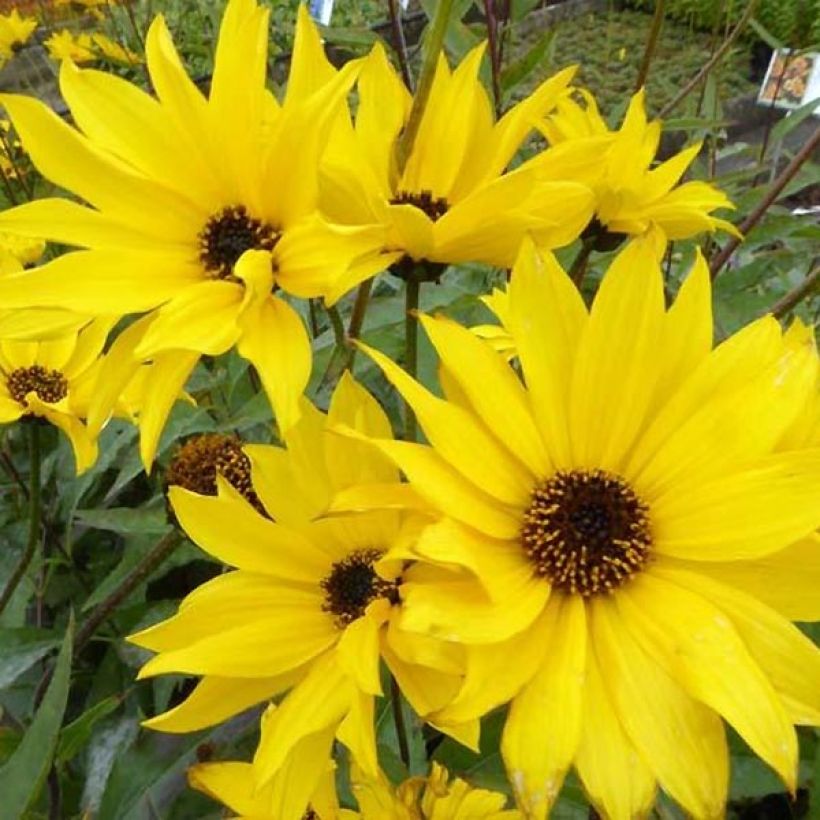

Flowering
Foliage
Plant habit
Botanical data
Helianthus
atrorubens
Monarch
Asteraceae
Sunflower, Dark-Eye Sunflower
Cultivar or hybrid
Other Helianthus
Planting and care
Plant Helianthus atrorubens 'Monarch' in ordinary soil that is not too heavy but fertile. This perennial can tolerate temporary drought, as long as the soil is rich. Plant in a sunny or partially shaded position, sheltered from strong winds that could flatten the clump, although it is sturdy. The plant does not need to be staked. It easily self-seeds in the garden, making it an ideal candidate for transitional areas with hedgerows or the countryside. Its seeds will feed the birds. Trim back the clump after flowering to prevent seed formation, or in late winter to maintain a compact habit.
Planting period
Intended location
Care
-
, onOrder confirmed
Reply from on Promesse de fleurs
Late flowering perennials
Haven't found what you were looking for?
Hardiness is the lowest winter temperature a plant can endure without suffering serious damage or even dying. However, hardiness is affected by location (a sheltered area, such as a patio), protection (winter cover) and soil type (hardiness is improved by well-drained soil).

Photo Sharing Terms & Conditions
In order to encourage gardeners to interact and share their experiences, Promesse de fleurs offers various media enabling content to be uploaded onto its Site - in particular via the ‘Photo sharing’ module.
The User agrees to refrain from:
- Posting any content that is illegal, prejudicial, insulting, racist, inciteful to hatred, revisionist, contrary to public decency, that infringes on privacy or on the privacy rights of third parties, in particular the publicity rights of persons and goods, intellectual property rights, or the right to privacy.
- Submitting content on behalf of a third party;
- Impersonate the identity of a third party and/or publish any personal information about a third party;
In general, the User undertakes to refrain from any unethical behaviour.
All Content (in particular text, comments, files, images, photos, videos, creative works, etc.), which may be subject to property or intellectual property rights, image or other private rights, shall remain the property of the User, subject to the limited rights granted by the terms of the licence granted by Promesse de fleurs as stated below. Users are at liberty to publish or not to publish such Content on the Site, notably via the ‘Photo Sharing’ facility, and accept that this Content shall be made public and freely accessible, notably on the Internet.
Users further acknowledge, undertake to have ,and guarantee that they hold all necessary rights and permissions to publish such material on the Site, in particular with regard to the legislation in force pertaining to any privacy, property, intellectual property, image, or contractual rights, or rights of any other nature. By publishing such Content on the Site, Users acknowledge accepting full liability as publishers of the Content within the meaning of the law, and grant Promesse de fleurs, free of charge, an inclusive, worldwide licence for the said Content for the entire duration of its publication, including all reproduction, representation, up/downloading, displaying, performing, transmission, and storage rights.
Users also grant permission for their name to be linked to the Content and accept that this link may not always be made available.
By engaging in posting material, Users consent to their Content becoming automatically accessible on the Internet, in particular on other sites and/or blogs and/or web pages of the Promesse de fleurs site, including in particular social pages and the Promesse de fleurs catalogue.
Users may secure the removal of entrusted content free of charge by issuing a simple request via our contact form.
The flowering period indicated on our website applies to countries and regions located in USDA zone 8 (France, the United Kingdom, Ireland, the Netherlands, etc.)
It will vary according to where you live:
- In zones 9 to 10 (Italy, Spain, Greece, etc.), flowering will occur about 2 to 4 weeks earlier.
- In zones 6 to 7 (Germany, Poland, Slovenia, and lower mountainous regions), flowering will be delayed by 2 to 3 weeks.
- In zone 5 (Central Europe, Scandinavia), blooming will be delayed by 3 to 5 weeks.
In temperate climates, pruning of spring-flowering shrubs (forsythia, spireas, etc.) should be done just after flowering.
Pruning of summer-flowering shrubs (Indian Lilac, Perovskia, etc.) can be done in winter or spring.
In cold regions as well as with frost-sensitive plants, avoid pruning too early when severe frosts may still occur.
The planting period indicated on our website applies to countries and regions located in USDA zone 8 (France, United Kingdom, Ireland, Netherlands).
It will vary according to where you live:
- In Mediterranean zones (Marseille, Madrid, Milan, etc.), autumn and winter are the best planting periods.
- In continental zones (Strasbourg, Munich, Vienna, etc.), delay planting by 2 to 3 weeks in spring and bring it forward by 2 to 4 weeks in autumn.
- In mountainous regions (the Alps, Pyrenees, Carpathians, etc.), it is best to plant in late spring (May-June) or late summer (August-September).
The harvesting period indicated on our website applies to countries and regions in USDA zone 8 (France, England, Ireland, the Netherlands).
In colder areas (Scandinavia, Poland, Austria...) fruit and vegetable harvests are likely to be delayed by 3-4 weeks.
In warmer areas (Italy, Spain, Greece, etc.), harvesting will probably take place earlier, depending on weather conditions.
The sowing periods indicated on our website apply to countries and regions within USDA Zone 8 (France, UK, Ireland, Netherlands).
In colder areas (Scandinavia, Poland, Austria...), delay any outdoor sowing by 3-4 weeks, or sow under glass.
In warmer climes (Italy, Spain, Greece, etc.), bring outdoor sowing forward by a few weeks.


































